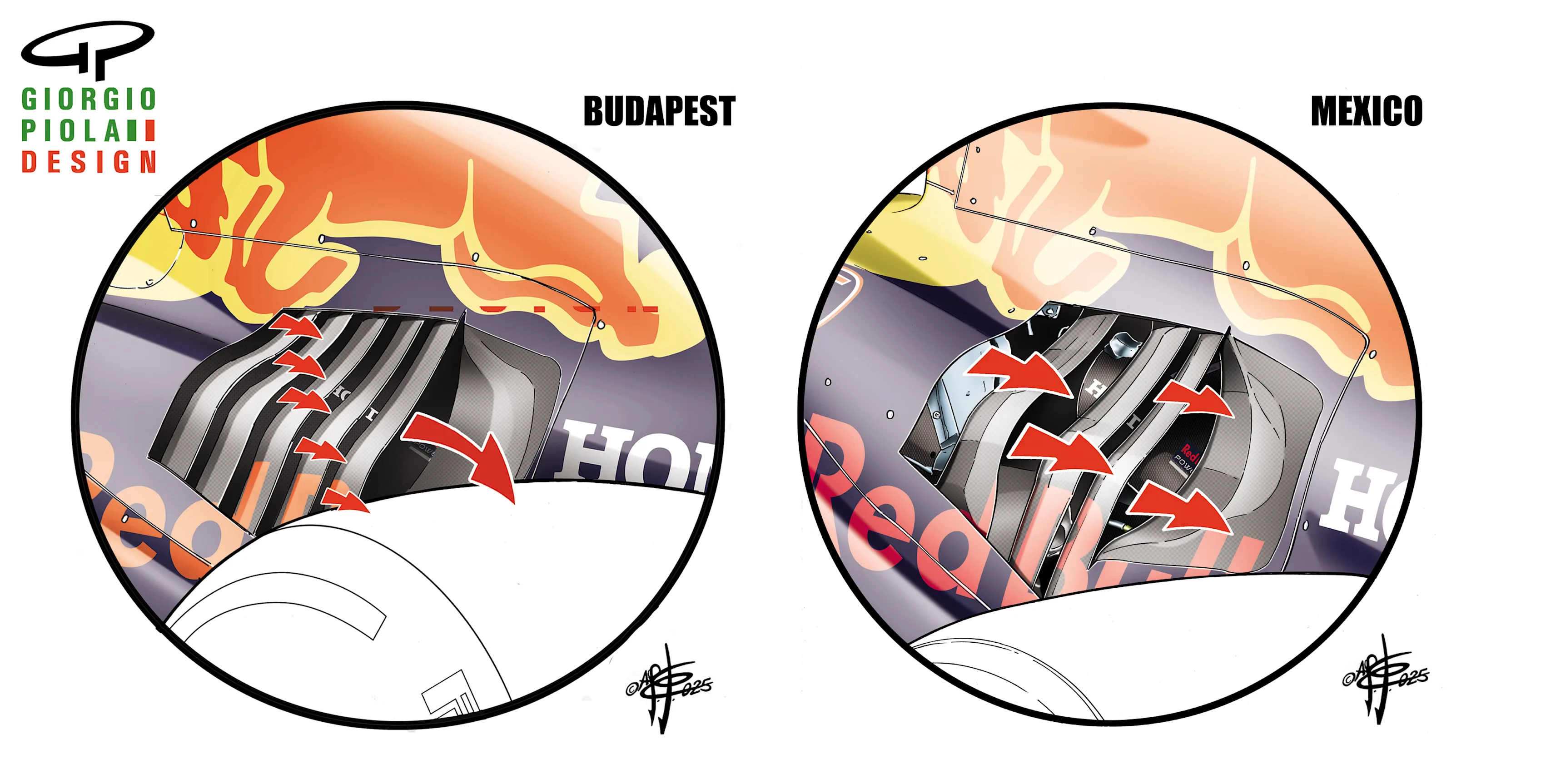
1. The difference in floors (by tracing the G-line) shows that the size of the venturi neck is "similar"
(using the tyres as the bottom line reference) in both cases, but the length of this neck is longer in the RB21. Btw, this is RB21's latest and newest floor brought in Mexico.
2. The difference in floors also shows the different curvatures fore and aft of the neck and also the number and location of 'kicks'.
(I am too amateur to make any judgements about #1 and #2 above, and hence just pointing out the differences, no comments on effectiveness differences, if any)
3. Only the rear arm of the front upper wishbone is clearly visible, but the difference in length 'could' point to 'more wheel travel for given stiffness' which in turn, could be a vital reason for better bump/kerb ride quality shown by the McL39 given that the stiffness setup for a track, is always a compromise between mechanical and aerodynamic needs
(my conjecture is that the fronts are by design much stiffer than the rears anyway, hence the front suspension defines bump/kerb riding).
4. The top of engine cover and the top of the sidepod, both indicate the difference in the 'shape' of air that is fed to the rear downforce structures (rear wing, beam wing) and which eventually has to marry with the air exiting the floor via the diffuser. The shape differences point to a much better packaging job in the McL39.
5. We have seen 'posterior pics' of both cars, where the engine cover rear exit of the McL39 is far smaller than that of RB21. This, alongwith #4 above, together provide a good idea of the sheer 'volume advantage' of feed-air
(air getting squeezed by the engine cover and the sidepod and guided to the rear wings) that the McL39 enjoys.
6. Finally, the difference b/w the amount of cooling openings on the engine cover - they not only point to better heat exchanger design and cooling flow management by the McL39, the difference proves vital in terms of the 'quality of air' (boundary layer spoiled less if less hot air exits) hitting the rear downforce structures.
(#5 and #6 show a 'double whammy' effect on the amount of downforce available on the rear of the car


